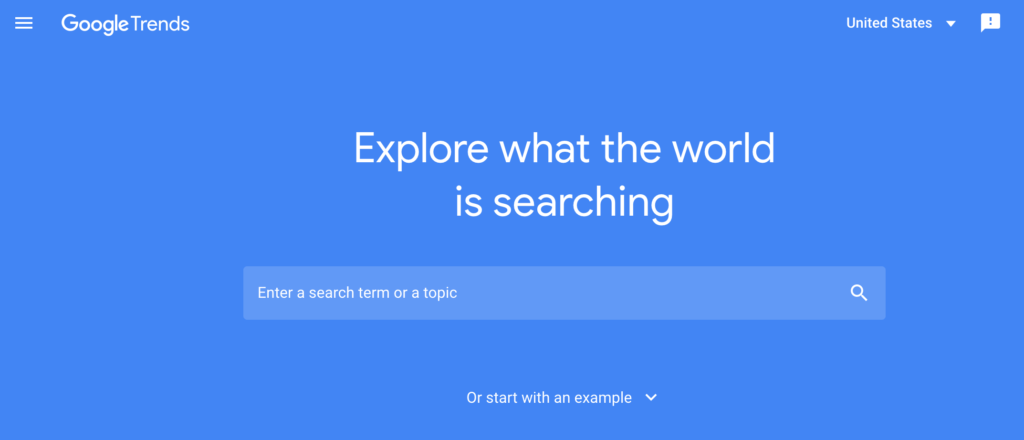Google Trends is a powerful and free tool provided by Google to help users understand search trends across many regions and languages over time. While Google Trends can be used for fun, like finding out what the top searched songs were in 2019, there are real business marketing applications too.
This guide will give you an overview of how Google Trends works, and provide some tips on how to use Google Trends for your business in 2020.
How Google Trends Works
Google Trends is fairly straightforward, but there are a few important metrics to understand. For a more in-depth look at using Google Trends, be sure to check out Google Trends Lessons.
So how does Google Trends work? Trends analyzes search data and takes a sample based on a time period set by you. You can set a time period back as far as 2004 and as recent as the past hour. You can also set a custom time period if you are interested in seeing trends during a specific time.
Keep in mind, Google Trends shows relative data, not quantitive data. This means that the graph shows the popularity of the search term, rather than how many searches total.
The data comprises how many search queries were made out of all search queries made during the time period. For example, I entered “fidget spinners” and set the time period between Jan 1 2019 and Jan 1 2020.
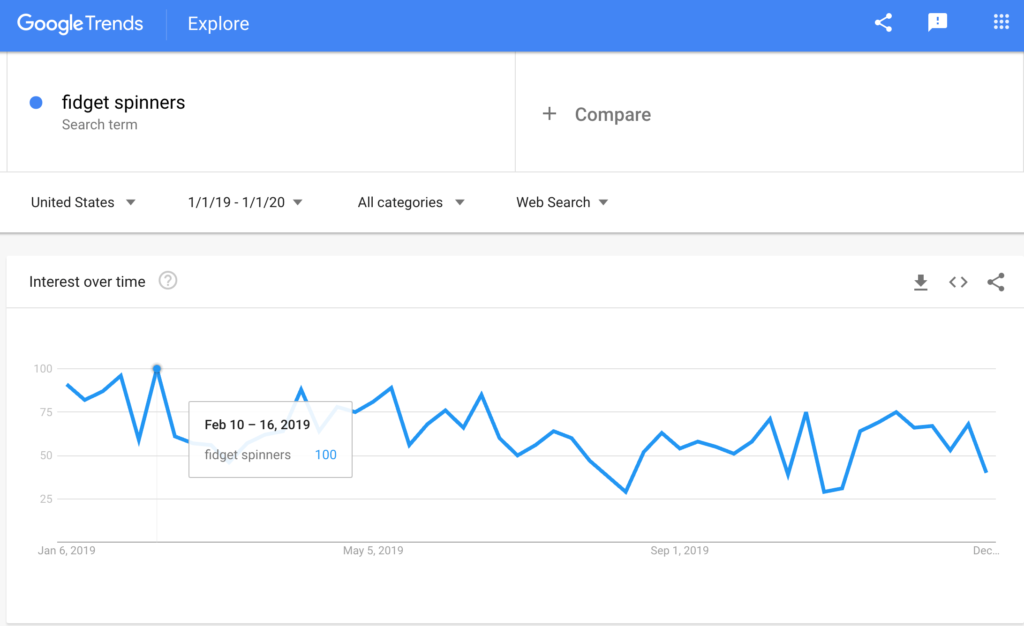
You can also compare up to five different search queries to see differences in search trends.
Since Trends shows a normalized summation of search queries sampled from all search queries in the Google network, the numbers and the trend lines of the graph show popularity on a scale rather than the specific volume of searches. So, the closer the trend is to 100, the more popular it is and the closer it is to 0, the less popular the search term is.
You can also filter your data to see more specific results.
Filters available in Trends include:
Time – 2004-Present and custom time periods
Region – Country, State, Province, and other geographic regions, or Worldwide
Categories – Topical categories such as Arts & Entertainment, or All at once
Source – Web Search, Image Search, News Search, YouTube Search, or Google Shopping
When it comes to trends in Google search, you can find the what, when, and where very easily!
Rising Trends and Breakout Topics
Sometimes there are especially popular search queries that rise quickly in a relatively short amount of time. These queries are considered Rising. In the Related queries table, the top rising search queries related to “fidget spinners” are labeled as Breakout. This means that the query has risen at least 5,000% during the time period you selected. That is a very significant rise in popularity!
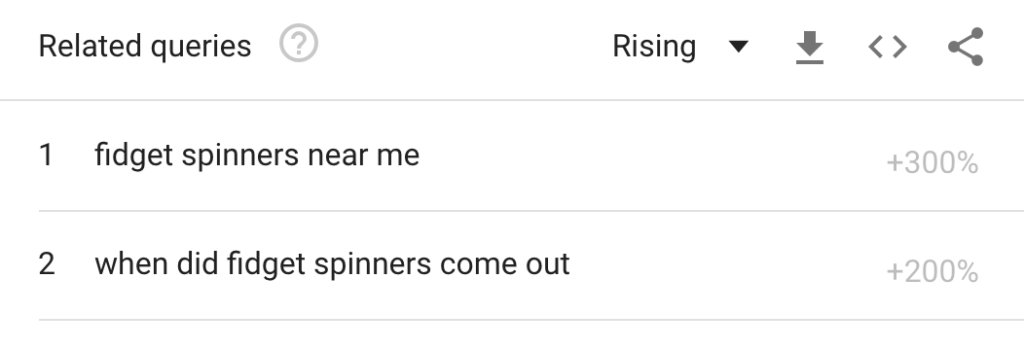
Using Google Trends for Market Research
With a basic understanding of how Google Trends works, we can then apply that knowledge to using Trends for market research and search engine optimization (SEO).
Three factors to keep in mind when using Google Trends for business marketing:
Geography – Where are people searching?
Seasonality – When are people searching?
Relevancy – What are people searching for and on what platform?
Geography
Comparing different search queries can share insights on what terms are searched more than others. For example, is the search term “red fidget spinner” more popular than “blue fidget spinner”? Is the popularity for one search query the same on Web search versus Google Shopping? Where in the United States is the term “fidget spinner” the most popular? You might be surprised to find that “blue fidget spinners” are more popular in California and “red fidget spinners” are more popular in Texas. If your business sells fidget spinners, you would probably have better success advertising color-specific fidget spinners where they are more popular.
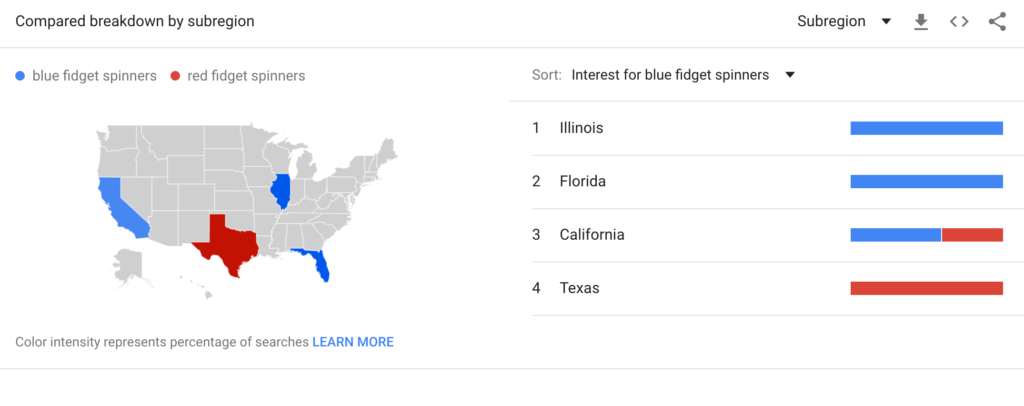
Seasonality
Many search terms can be affected by seasonality. How many people are searching for Halloween in January versus in October? If your lawn care company has the most business during spring and summer, you could probably expect that search term popularity related to lawn care will spike during these times. Seasonality can help you plan advertising campaigns by knowing when to start ramping up for the peak time.
Relevancy
There could be thousands of people searching for your product or service but aren’t finding you online because your clinic’s website only talks about flu vaccines when most people are searching for flu shots. They are the same thing, but “flu shots” is a more popular term than the other.
Keep in mind that the platform that people are using to search also might change the popularity of a query. You may find that more people are using a specific term in a Web search when compared to an Image search or Google Shopping search.
Using Google Trends for Keyword Research
When you compare keyword research tools, such as Google Keyword Planner versus Google Trends, the former shows search volume while the latter shows relative searches to all Google search queries. The benefits of using Google Trends is that you can see trending search queries by popularity in almost real time. For a quick comparison of keyword popularity, let’s compare “mosquitos” with “mosquitoes”. You may not be aware that there are two correct ways to spell “mosquitoes” in its plural tense (I certainly didn’t). But, it looks like “es” is the winner of the popular vote rather than “os”.
Side note, look out for deceptive spikes in data. Hot topics can skyrocket within a matter of hours, but looking at the big picture will reveal how long the popularity actually lasts.
When Disney Plus was first launched, it blew past Netflix within days.
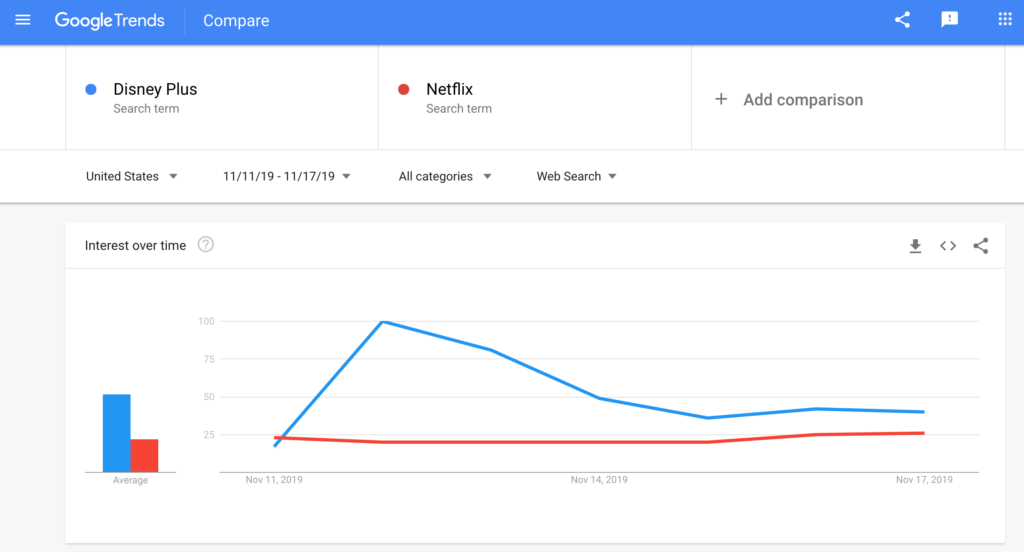
But, two months later, Disney Plus drops below Netflix again.
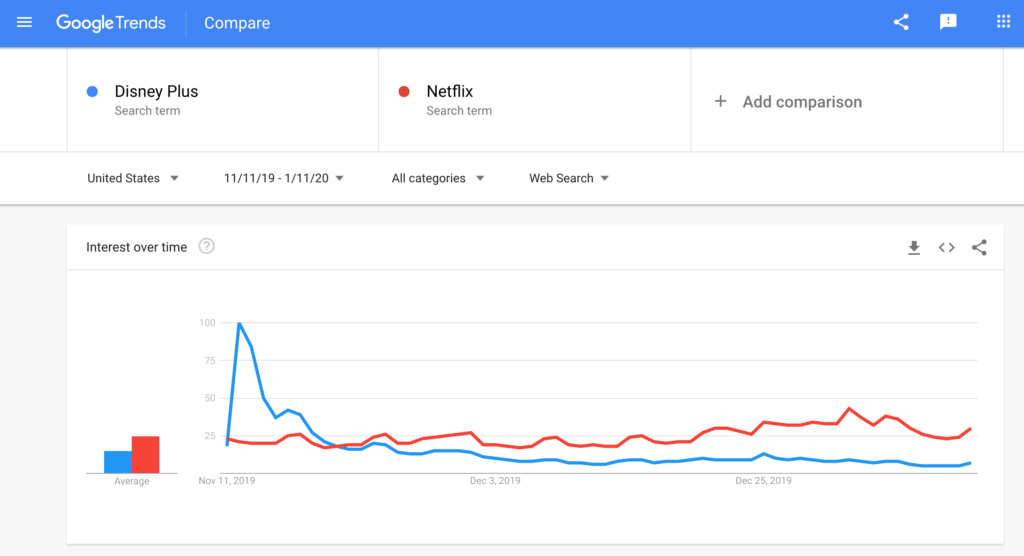
In that small time frame, Disney Plus nearly topped 100, but within a week was already trending below Netflix again. This demonstrates just how quickly search trends can rise and fall.
If you need a quick comparison of various phrases during your keyword research process, nothing beats Trends. If you need to know which question is the most commonly asked, or what phrase is most common, (i.e. lawn care vs. lawn service) Google Trends can provide you with the answer so that you are using the right keyword phrases.
Using the three factors mentioned, seasonality, relevancy, and geography, you can identify what phrases to use at the right time. You can create an editorial calendar based on the ebb and flow of search behavior throughout the year.
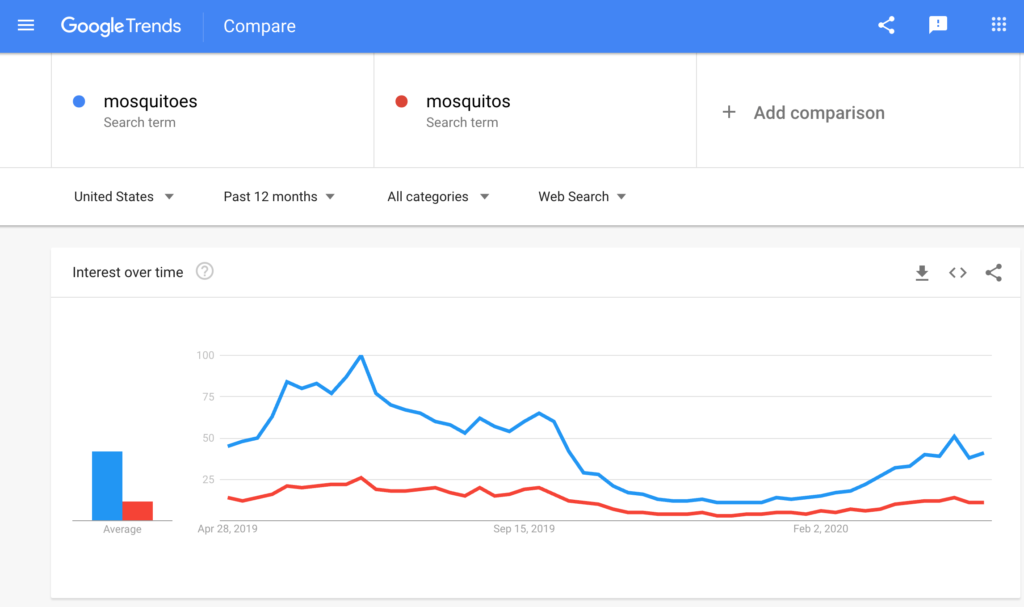
Using the Data
So you have Trends data, what next? After you have compared keyword phrases across time, region, and platform, Trends also provides Related Search Queries and Related Topics you can use to inspire a wider scope. You might find that there are opportunities you have previously overlooked. Red and blue fidget spinners are popular, but it may be time to start offering green ones too!
Trends makes it easy to export the data you find in the tool. You can export graphs to a .CSV file for using in your own spreadsheet. You can also embed the graph or share your discoveries on social platforms. With a healthy sense of curiosity, and a little imagination, Google Trends can be an invaluable tool in our marketing toolbox.
If you have a Google My Business listing, Google has announced new updates to help businesses during the unprecedented COVID-19 pandemic. See the new updates for Google My Business and how to use them to help your business online.
Do you want to take your business digital marketing to the next level? Smartz can help you get there. We have helped many businesses across a diverse range of industries achieve their marketing goals and beyond. We specialize in a number of areas, including web design, search engine optimization, paid advertising, social media marketing, and more. Contact us today and let’s start the conversation.




